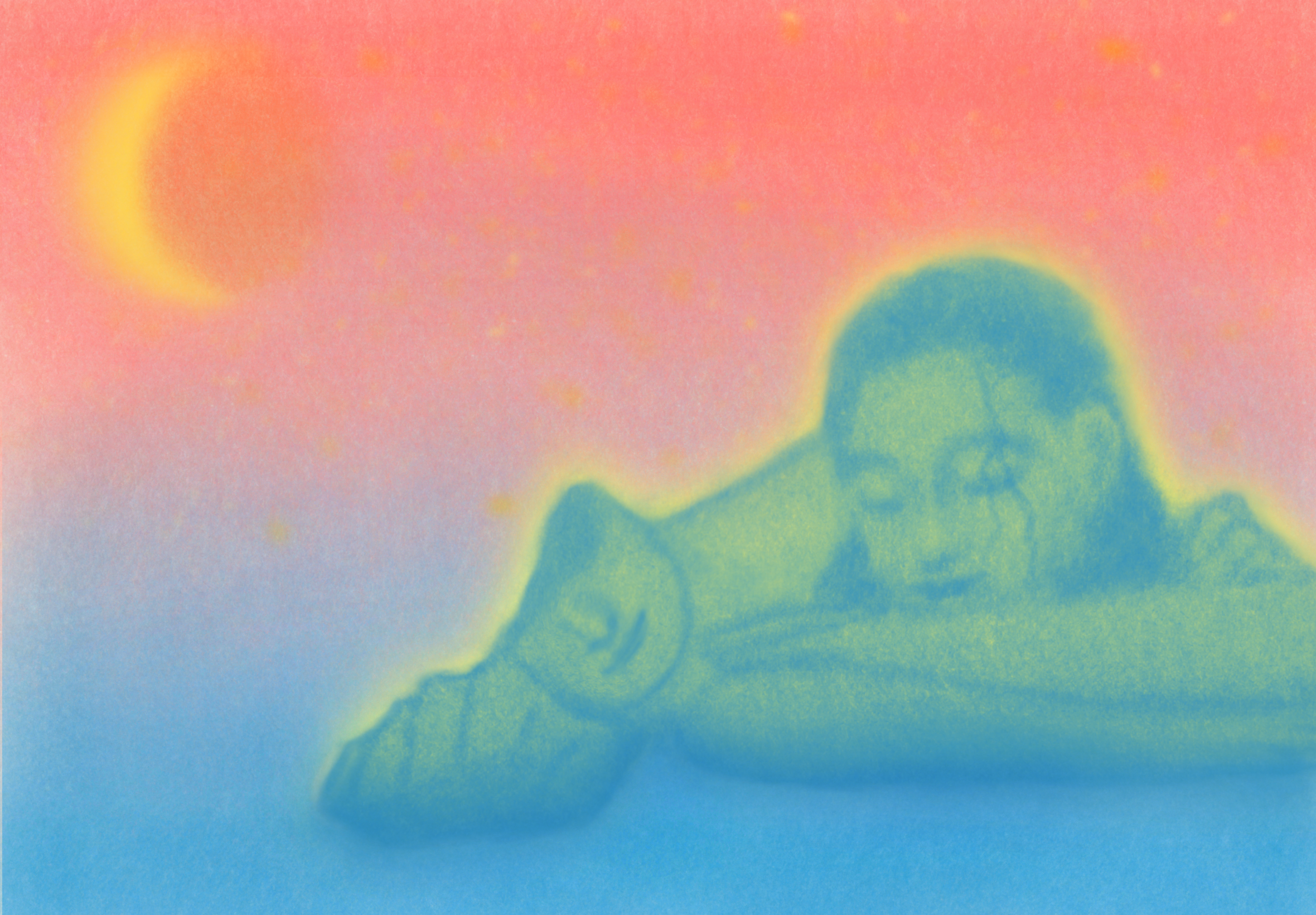
I was very struck by the sentence “οἱ νεηνίαι οὐκέτι ἀνέστησαν” in section 1.31 and the profound narrative blank afterwards. We will never know how their mother felt when she saw their cold bodies the next day, so I chose to imitate the multi-layered emotions through a blurry dreamlike style that is open for interpretation.
Perhaps death is the best thing that could happen to anyone (at least in Hera’s perspective), but we mortals may just wish to stay a little longer with our dear ones. The gods are mocking humans’ weakness of holding onto things, but I still believe it is beautiful to have something to cherish. I placed them in a space independent of time to emphasize the universality of this story. However, I enhanced the realistic statue quality on their faces, for people might react differently if the sculptor in Delphi captured their final moments, instead of the classical kouros pose.
The moon in the upper left corner is something I associate with themes of reunion with and separation from family members in this story. Chinese people have the Mid-Autumn Festival, when we watch the full moon with our family. Here is an excerpt from a poem that I think fits the context of this drawing. This makes me wonder if the mother will miss her sons some night looking at the moon, even knowing that they already met the best possible end for all humans.
“People have their joys and sorrows, partings and reunions,
The moon has its phases of waxing and waning, being clear or cloudy.
Such perfection [of reunion under the full moon] is rare through the ages.
Yet may we all endure for a long while,
So that we could share the moon, though thousands of miles apart.” (Shuǐdiào Gētóu – Bǐngchén Zhōngqiū by Su Shi)
Finally, the faces of the two young men are inspired by the sculptures in Luoyang Museum and V&A Museum. When I struggled with capturing their content smiles (since they just received great glory from the crowd), I suddenly remembered the mysterious and serene smile of the Buddha. This coincidentally aligns with the “independent of time and space” atmosphere that I intended.


stucco with polychrome,
Victoria and
Albert Museum